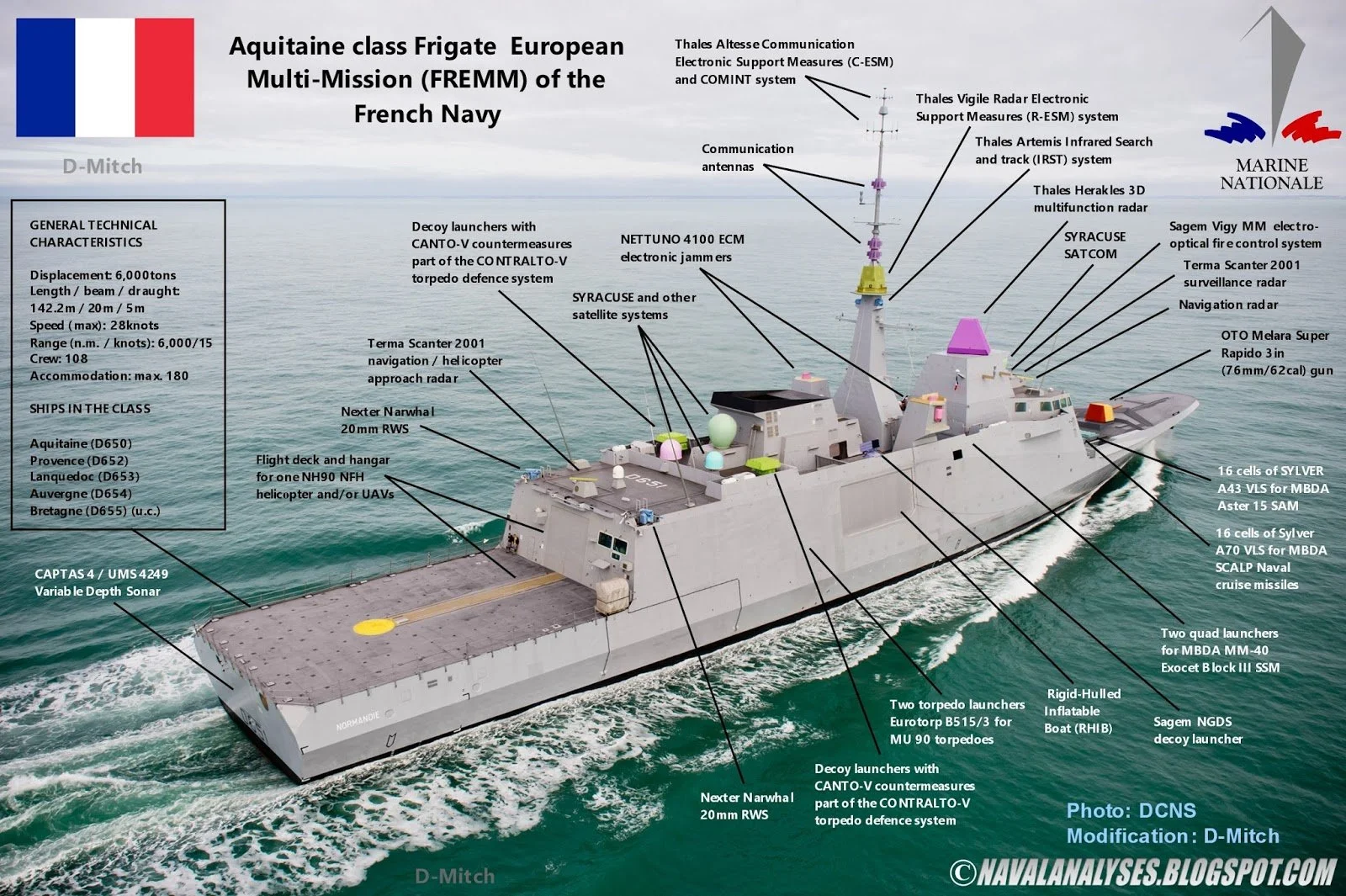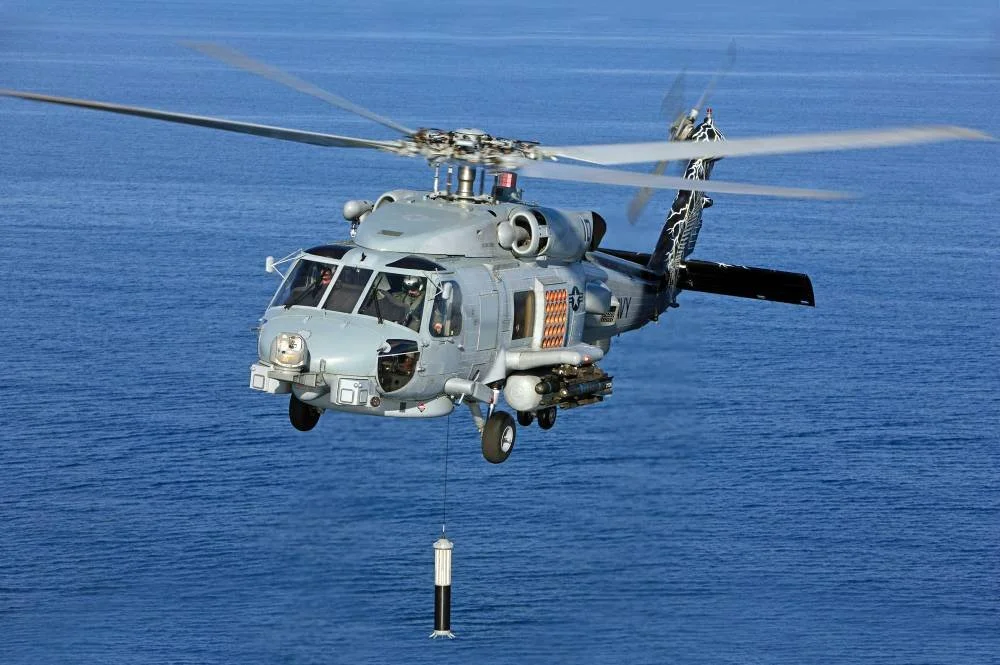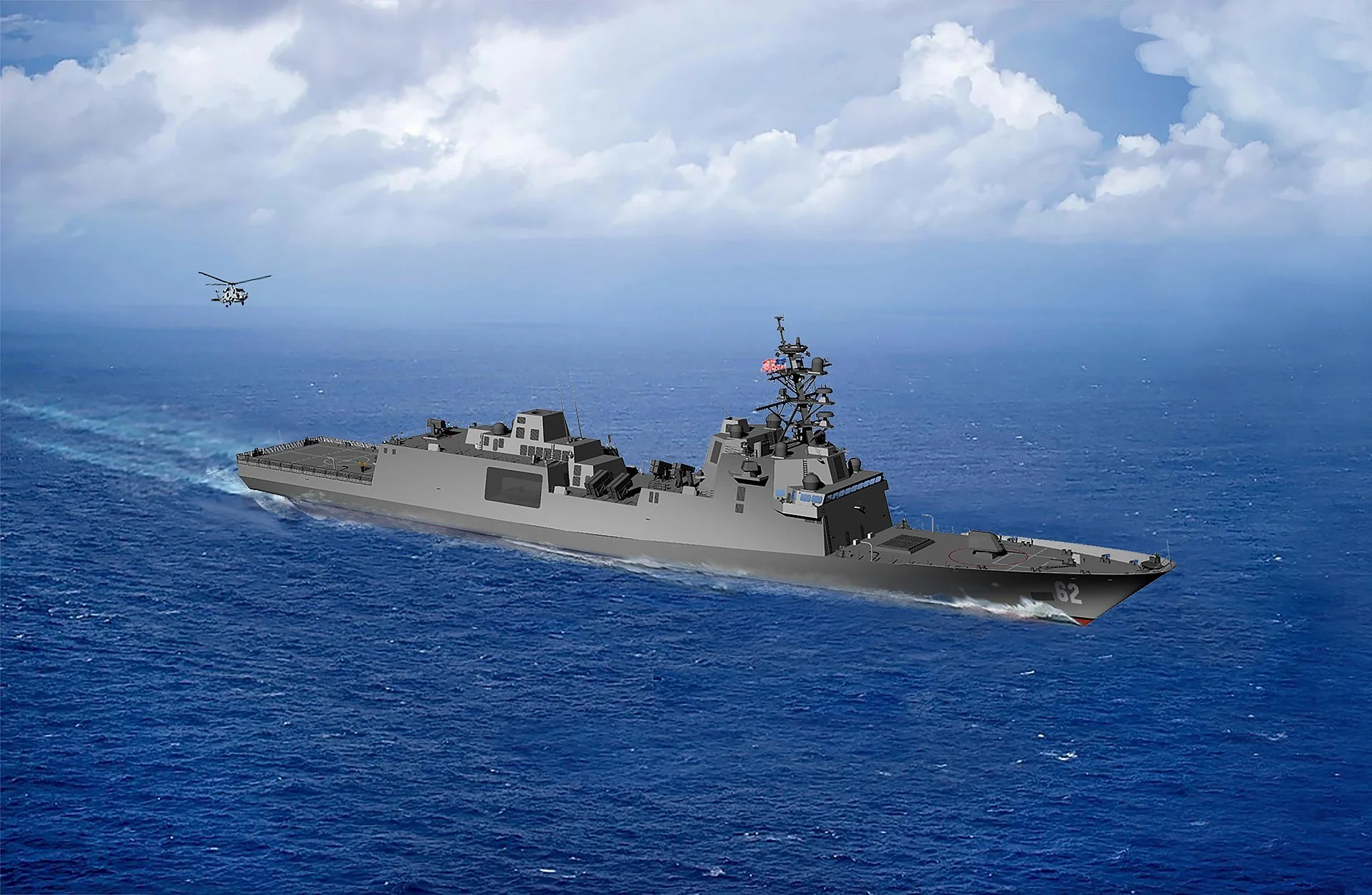Hook ‘hem !
Submarine Hunting the French Way
On February 1st, French MOD announced that units from the French Navy won the Hook 'Em award for the third year running!
“Created in 1975, this distinction presented by the Commander of the US 6th Fleet (C6F) recognises the best-performing units in anti-submarine warfare.
This year's award of excellence was presented by Vice-Admiral Ishee (C6F) to Vice-Admiral Boidevezi, Commander of Task Force 470 (CTF 470) and the multi-mission frigates (FREMM) Auvergne, Bretagne, Languedoc and Provence, for their deployments in the Mediterranean in coordination with the US Navy.”
Usually awarded to American units, this is the fourth time in total that the prize has been awarded to French units. It is a mark of the recognition of French expertise in a domain where the US Navy and the Royal Navy have been experts since the First World War.
Naval News interview 2023 winner
Why is the FREMM such a good ASM platform?
French naval shipyards
Naval Group based in Lorient Brittany built the world's first Stealth frigate, the Lafayette class in 1990. The electromagnetic reduction is so efficient that its SER is reported to be equivalent to fishing vessels. Although it was a revolution in naval construction, the Lafayette class in the French Navy was a victim of budget cuts and was never developed to its full potential.
However, the concept was used by many navies such as the Taiwanese Navy which bought a few and the PLAN Navy which worked from the Lafayette blueprint as a benchmark for their Naval development.
The French Navy had to wait for the FREMM program to get a true multi-role stealth warship.
France and Italy were already working on the Horizon Air defence destroyers when the FREMM program was launched in 2002. In this program, the stealth characteristics of the Lafayette class were pushed to another level.
Submarine construction techniques are used to reduce radiated noise. Internal elements are suspended on rubber to prevent vibrations from being transmitted to the water via the hull.
The ships uses electric motors below 16 knots to maintain a very faint acoustic signature, quiet enough to significantly reduce the acoustic advantage of even the most modern submarine.
FREMM Diagram by D-Mitch
Sonar suite
In the 1980s, the French Navy, conscious that modern submarines were increasingly difficult to detect using only passive sonar, decided to invest heavily in active and passive variable Depth Sonar. The George Leygues ASM frigate built in the late 70s was very effective in detecting Soviet submarines hiding below the thermal layer.
The next revolution was the introduction of the world-beating long-range active low-frequency sonar the SLASM, aboard the 2 French Tourville class destroyers in the mid-90s.
The hunter became the hunted!
French Sailors proudly remember the inter-allied exercises in which this new system baffled American submarines, which were pinged at great distances by this new type of active sonar system with a very specific noise nicknamed “the wolf's call”.
See my previous article
The Thales' CAPTAS 4 (Combined Active-Passive Towed Array Sonar) is its latest evolution.
Thanks to the extremely long range the Captas 4 variable depth Sonar suite provides, it can detect submerged targets way before they arrive in weapon range.
The system generates ATBF waves and its fish can dive up to 300 metres to cover a very large volume of water over an extremely long range of up to 150 km when conditions are ideal, according to a statement by Admiral Morio de l'Isle (FOST commander).
It is today considered the best ASM suite in the world. Used first by the Royal Navy on the type 23 destroyer in 2004, then by the French and the Italians on their brand-new warship.
Captain Jean-Pierre Helluy, FREMM programme officer at the French Navy's general staff, said in an interview with Mer et Marine: "The arrival of the FREMMs represents a major qualitative leap forward in anti-submarine warfare that is unique in the world. We have already measured this technological leap and are continuing to measure its effects with a generation of sailors now trained on these ships. With the FREMM/NH90 combination, we are even ahead of the others”
ASM Helicopter
The Flash dipping sonar onboard the NH90 Caiman helicopter is another Thales jewel. In service with the US Navy since 1993 with 250 systems delivered, it was also adopted by the British Merlin fleet, then by the French Navy in 2013. Other countries have also adopted the system, including Australia, Norway, South Korea, the United Arab Emirates and, more recently, the Philippines.
Flash Dipping sonar on US Navy SH60F
US Navy and ASM operation
The last factor in this equation is the lack of surface ships the US dedicated to the sub-hunting mission over the last 30 years.
At the end of the Cold War, the Soviet submarine threat disappeared overnight, with no more “Red Storm Rising” scenarios where hundreds of Soviet submarines would rush to the North Atlantic to intercept NATO convoys.
US Navy quickly got rid of hundreds of ASM ships. Most of the Spruance class destroyers were used as targets during fleet exercises, while many OH Perry frigates being more economical to run, were transferred to friendly navies.
The US Navy thought its fleet of 60+ advanced submarines and 60+ destroyers would suffice.
The USN surface fleet relies today on a mix of heavy destroyers Ticonderoga and Arleigh Burke class. Both are excellent warships but despite being equipped with excellent passive towed array sonars, they have no VDS capabilities and being bigger ships they are more expensive to run and noisier.
The French Navy only has 6 attack submarines, not enough to protect the carrier group and the SSBN force at the same time. They had no choice but to keep a very high level of expertise in the ASM game.
After demonstrating the effectiveness of the Aster air defence system onboard the FREMM FS Languedoc a few weeks ago, The Hook’ em Awards recognise again the French Navy's ASM know-how, but also the quality of the European defence industry which produced this world-beating combination of ship, sonar and helicopter.
In light of recent Chinese and Russian submarine development, it looks like it was enough to convince the US Navy that their best option for a next-generation frigate, is the Italian-built version of the FREMM equipped with the Captas 4.
The Constellation-class multi-mission guided-missile frigates of the United States Navy are based on the European multipurpose frigates (FREMM)
Sources
https://www.meretmarine.com/fr/defense/thales-livre-son-500eme-sonar-trempe-flash
Reportage a bord de la fremm auvergne », sur Mer et Marine
https://www.navalanalyses.com/2014/07/aquitaine-class-fremm-frigates-of.html




